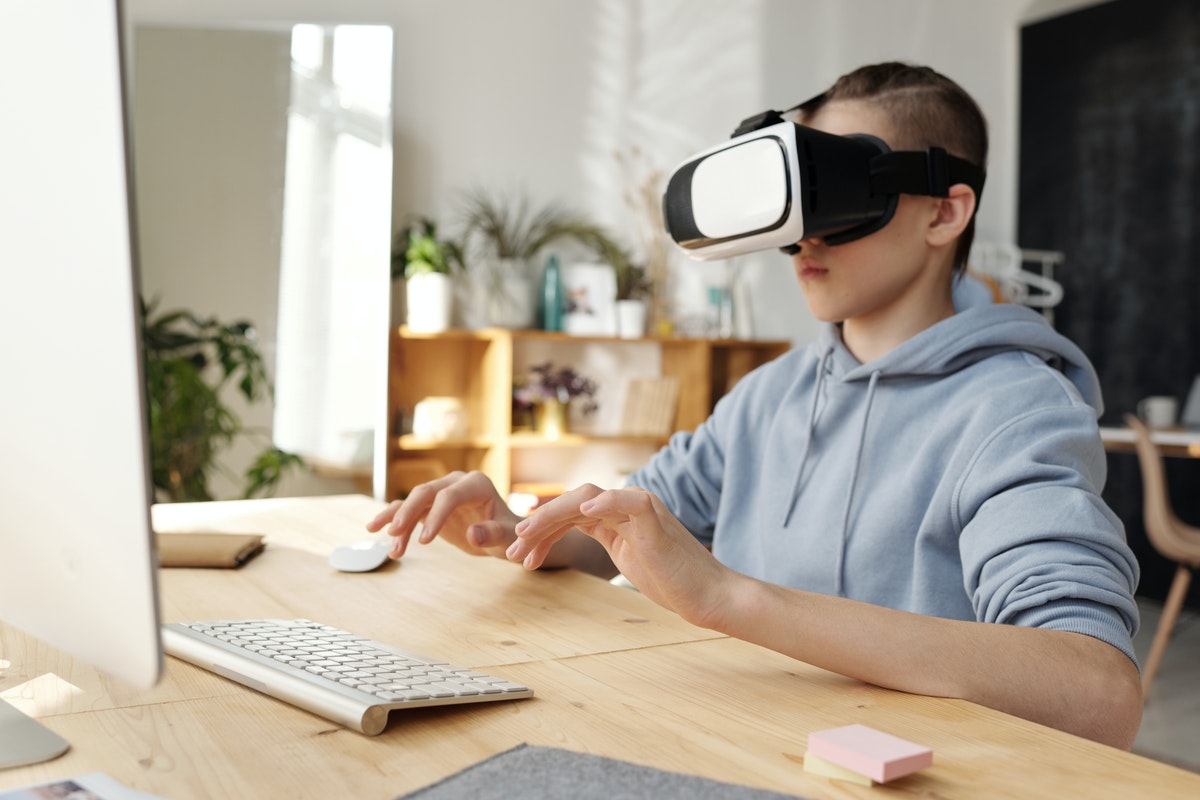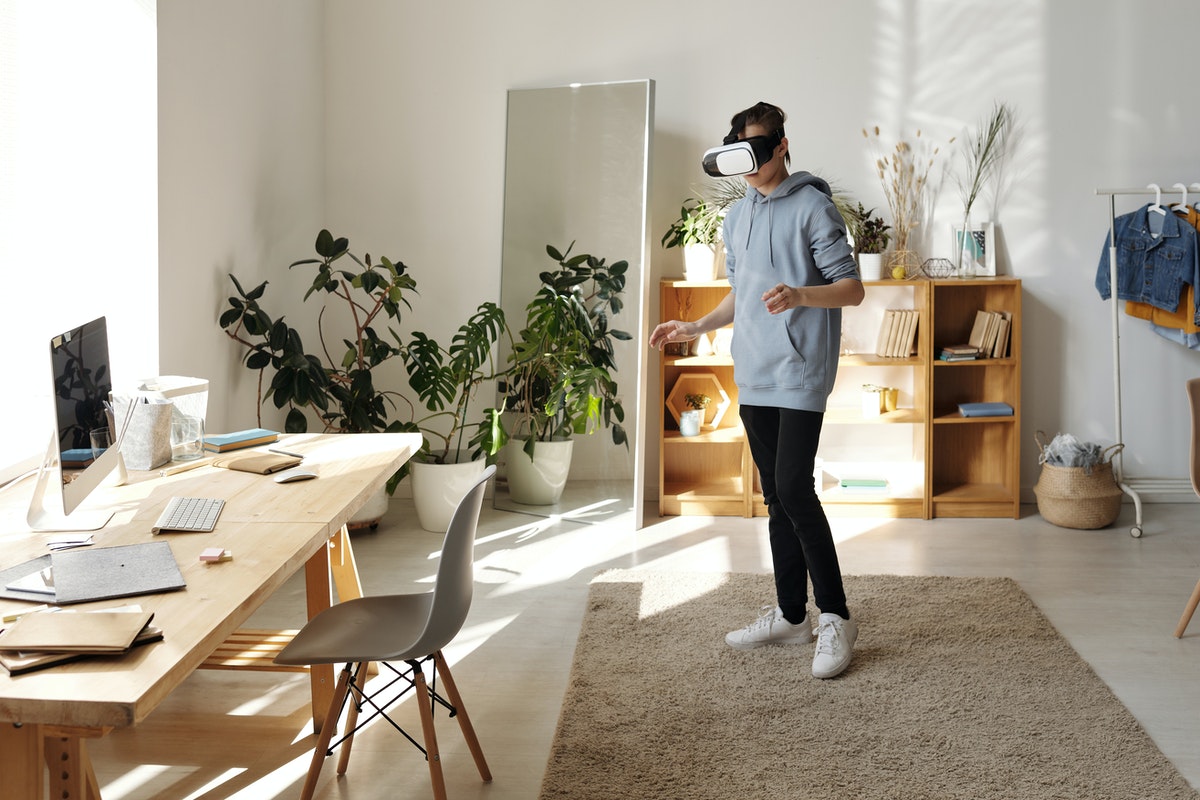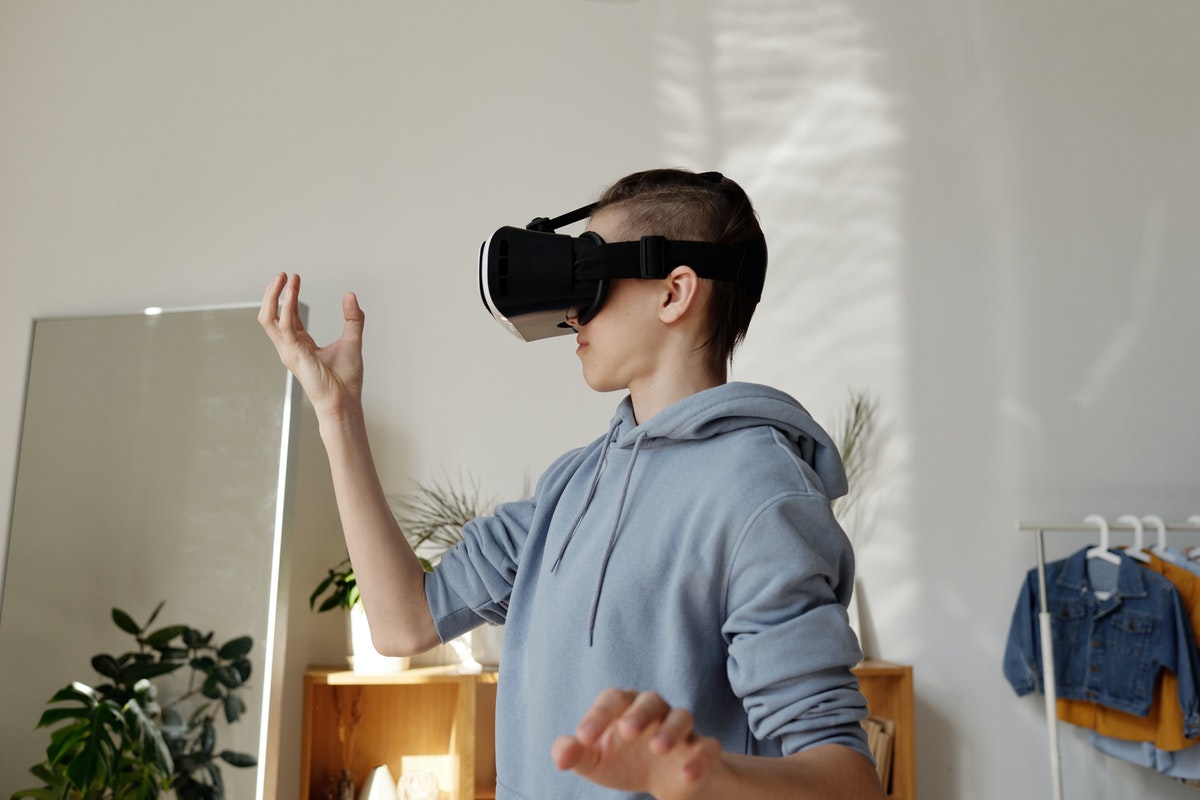All the rumors are true! Apple could be releasing a futuristic AR/VR headset as soon as 2023, according to reports by Apple analyst Ming-Chi Kuo. The hi-tech company houses a separate research unit where hundreds of developers have been experimenting with AR and VR. What’s more, Apple has increasingly acquired numerous AR/VR companies, like Metaio, a startup that works to create interactive user experiences within a few minutes.
As with all groundbreaking tech, there’s a hush-hush atmosphere around Apple’s upcoming projects which makes it even more exciting. While some companies have integrated AR/VR into everyday user experiences, there’s still a lot to be explored. Apple is reportedly working to release two devices, i.e., an AR/VR headset next year and a pair of AR glasses sometime in the following years. Let’s take a look at what the AR/VR headset has to offer.

Apples VR/AR Headset – A Quick Overview
The first thing to note about Apple’s upcoming headset is that it will function as an independent device, unlike Samsung’s VR glasses that require a cellphone. The headset will come with A-series processors and will have two powerful chips that will handle the AR/VR functionalities in a smooth, streamlined way.
Users will have a unique experience when they engage with VR environments because the headset boasts over 12 cameras. These will track even the smallest hand gestures and movements along with eye tracking, leading to a highly immersive experience. It’s unclear whether or not Apple will include external devices such as a thimble or controllers. However, knowing Apple and how they like integrating technology into their consumers’ lives, these will probably be light and airy.
The design is rumored to be similar to some of the mainstream VR headsets available in the market. Think Meta’s Oculus or Sony’s PlayStation VR. It will also allegedly have a thin, curved visor that will rest on the user’s face with a mesh material and will come with headbands that can be changed. This will be great for users who want a personalized experience, as they can find the perfect headband for their size, much like straps for the Apple Watch.
Another attribute of Apple’s streamlined tech is the weight of the headset. Most VR headsets are quite heavy to wear for more than a few minutes. Apple is working on this problem by trying to reduce the final weight to between 100-200 grams. This would make it the lightest AR/VR headset available in the market.
The headset will purportedly run on a different operating system than current Apple devices. It will sport a new OS called “Reality OS”. The name has been hinted towards in Apple source code, so unless there are last-minute changes, there’s a high chance that this is what the operating system will be called.
So, this was an overall look at Apple’s futuristic AR/VR headset. Let’s take a deeper dive into the rumored features this headset will offer.
Apple VR/AR Headset: Rumored Features
There are several reports about the different features offered by the new headset. Some reports indicate that the headset will offer both surround sound and spatial audio, much like the AirPods Pro. Another report says that there will be a physical dial on the side of the headset for greater control and on-the-go changes. It’s also possible that there will be an additional visor that will display the headset’s experience to external viewers.
Speaking of the display, it’s rumored that the headset will feature two or three total screens. Two of these will be high-res micro-OLED displays with 4K. These will reportedly be sourced from Sony, but it’s also possible that Apple will incorporate some displays from Samsung. The third display might be a lower quality AMOLED screen that will be used for peripheral vision; hence the lower resolution won’t matter.
Apple will be using a technology called “Pancake lenses” that are labeled so because of their extreme thinness. These are also the reasons why the headset will be so light and comfortable to wear. These lenses are more expensive when compared to the other ones used by mainstream VR devices, but will give Apple the distinct advantage of having the lightest headset yet.
Users will love interacting with virtual environments because of the four 3D modules inserted into the headset. These are responsible for tracking hand and eye movements. Additionally, the headset will offer voice control and Siri support, allowing users to completely immerse themselves in their chosen environment. This will make movement intuitive, one of Apple’s trademark features across all their tech.
The headset will be standalone but will feature a ton of support from Apple. There might be a new App Store filled with applications specific to the headset. These will hyper-focus on gaming, streaming video, and FaceTime. As is Apple’s trademark, the company will partner up with several AR/VR vendors to create content specific to their headset. It’ll be a whole new way to engage users.
It will be easy to immerse yourself in this AR/VR tech since the headset will feature two M2 processors, bringing it almost up to par with Apple’s most powerful Macs. There will apparently be a whopping 96W charger due to the powerful chips. Apple has finished optimizing the SoCs for the headset and is now running trials ahead of final production.

Apple VR/AR Headset: Rumored Price
Now that you know everything the AR/VR headset has to offer, here’s the breakdown of the rumored pricing.
It’s important to know that Apple doesn’t aim to release the headset for everyday consumers in the first run. Rather, they’re targeting professional developers and regular content creators. The rumors are that Apple expects to sell only one headset per day at their retail stores, amounting to 7-10 million units sold during the first year.
Keeping this in mind, they will most likely price it around $2000-$3000, making it pricier than a regular iPhone. However, Kuo has suggested a lower price of around $1000, which would put it within reach of Apple’s regular consumers. Either way, you should expect to save up a significant amount if you want to experience Apple’s AR/VR at some point.
Apple VR/AR Headset: Expected Release Date
Apple fanboys have been watching news of the headset closely, with many expecting it to release in 2022. However, new reports have indicated that Apple will debut their immersive new tech sometime in 2023, owing to some supplier constraints. A working prototype is apparently in the works and might be released sometime in 2022.
Kuo estimates that the user-ready headset will be the second-generation model and will release in early 2025. It is also rumored to have various price points with both a premium and budget option available for consumers.
Current News around Apple VR/AR Headset
In a savvy move, Apple Insider has created a 3D model of the rumored AR/VR headset that users can see using their iPad or iPhone. The 3D render looks similar to Meta’s Oculus Rift and users can interact with it by placing it on their desks or any flat surface using AR. The 3D model shows soft silicon straps to hold the headset in place. You can check out the device on their website.
While reports have been mixed about the kind of external devices that Apple will use to detect hand movements, new reports have mentioned gloves. Apple filed several patents that deal with the usage of gloves to track skin-to-skin contact in a virtual environment. These gloves will reportedly allow users to scroll, peruse documents, or interact with other users in a VR scenario.
Keep in mind that Apple doesn’t need to use the technology that they have filed patents for. Patents are a way for them to secure their stronghold in the market. Moreover, one of the patents is also about a ring that would be used with the gloves for specific gestures.

Final Thoughts
Apple AR/VR headset could topple the market if current rumors are to be believed. A lightweight, highly immersive device that works independently of an external device and allows users to have complete control of their immersive environment sounds almost too good to be true.
However, Kuo suggests that Apple is already working on the second-generation version of this futuristic headset. This is the model that’s expected to debut in 2025. This one will have an even lighter and more streamlined design, with a better battery and a speedier processer. Not only will this version have a smoother configuration, but it will also be available in multiple cost options so that various users can afford the device. The micro-OLED displays for this second-generation device will reportedly be supplied by LG.
The electronics giant is also creating specific components for the first-generation device. Lastly, Kuo also believes that Apple could launch AR/VR contact lenses in the mid-2030s, erasing the barrier between wearable tech and VR. However, Apple hasn’t released any news about this and these rumors are unconfirmed.